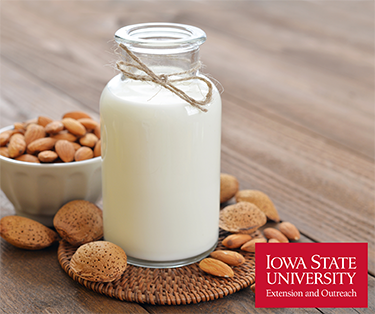Blog

If you’ve taken a walk through the dairy aisle during the past couple of years, you’ve probably noticed a lot of new products popping up on the shelves, like oat milk or almond milk. As a lactose intolerant person, I have been enjoying this new variety of food options, but as a nutrition student, I wonder about the nutritional value of these products compared to cow’s milk.
If you’re lactose intolerant like me, you can get lactose-free cow’s milk. If you can’t drink any cow’s milk, there are many other options, but it is important to be aware of the differences in nutrients. Unless they are fortified with calcium, and vitamins A, B and D, you may find these are missing from milk alternatives. I have listed some significant differences below, but there may be others, so check the Nutrition Facts label of any products you are considering.
- Soy milk is the most similar to cow’s milk nutritionally including having a similar amount of protein per serving. However, added flavors like original or vanilla have added sugars.
- Almond milk has about ¼ of the calories of cow’s milk, but it is low in protein. Additionally, it is not fortified with vitamin B12 like other milk alternatives, so it may not be the best option if you are vegetarian or vegan.
- Coconut milk contains more saturated fats, so it may not be the best option if you have heart disease.
- Rice milk is an option for people who are allergic to soy or nuts. However, it has twice the carbs of regular milk and little protein, so you may want to consider other options if you have diabetes.
A note on dairy alternatives for other products: Increasingly, there are more dairy alternatives for other products such as yogurt and cream cheese. Many of these products will have a different nutritional value from the dairy products they are imitating. These differences are due in part to the type of dairy alternative they are using. For instance, coconut milk yogurt will be higher in saturated fat. However, some of these products may also have added sugars to make the product taste better. Always read and compare the Nutrition Facts label to ensure you are getting the best product for your needs!
Written by Anna Lauterbach, ISU Dietetics Student

